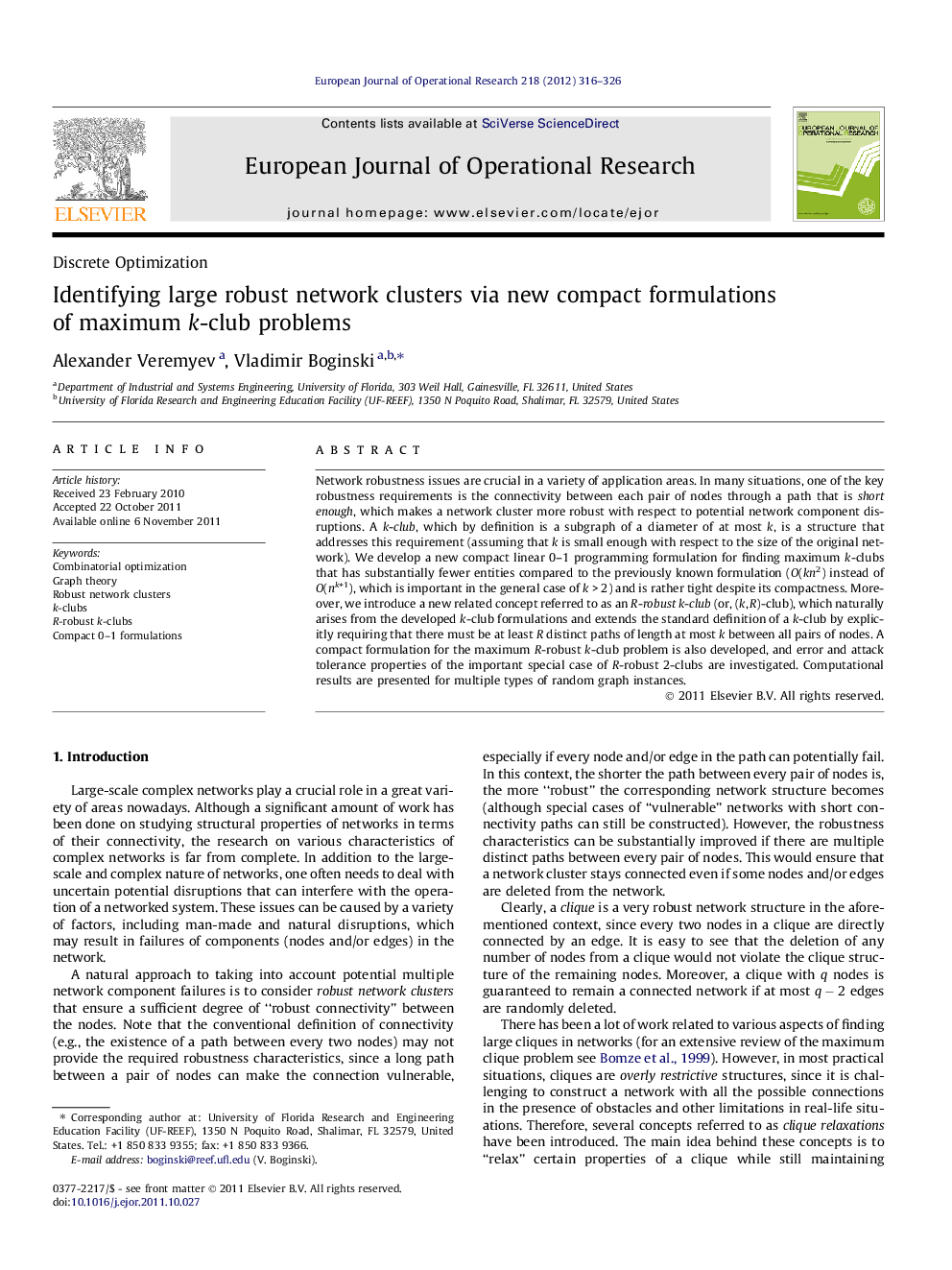| کد مقاله | کد نشریه | سال انتشار | مقاله انگلیسی | نسخه تمام متن |
|---|---|---|---|---|
| 476855 | 1446082 | 2012 | 11 صفحه PDF | دانلود رایگان |

Network robustness issues are crucial in a variety of application areas. In many situations, one of the key robustness requirements is the connectivity between each pair of nodes through a path that is short enough, which makes a network cluster more robust with respect to potential network component disruptions. A k-club, which by definition is a subgraph of a diameter of at most k, is a structure that addresses this requirement (assuming that k is small enough with respect to the size of the original network). We develop a new compact linear 0–1 programming formulation for finding maximum k-clubs that has substantially fewer entities compared to the previously known formulation (O(kn2) instead of O(nk+1), which is important in the general case of k > 2) and is rather tight despite its compactness. Moreover, we introduce a new related concept referred to as an R-robust k-club (or, (k, R)-club), which naturally arises from the developed k-club formulations and extends the standard definition of a k-club by explicitly requiring that there must be at least R distinct paths of length at most k between all pairs of nodes. A compact formulation for the maximum R-robust k-club problem is also developed, and error and attack tolerance properties of the important special case of R-robust 2-clubs are investigated. Computational results are presented for multiple types of random graph instances.
► A new linear 0–1 formulation for the maximum k-club problem has been proposed.
► A number of computationally hard problems have been solved for the first time.
► The proposed formulation is rather tight despite its compactness.
► A new concept of an R-robust k-club has been defined and analyzed.
► R-robust 2-clubs are shown to have guaranteed error/attack tolerance properties.
Journal: European Journal of Operational Research - Volume 218, Issue 2, 16 April 2012, Pages 316–326